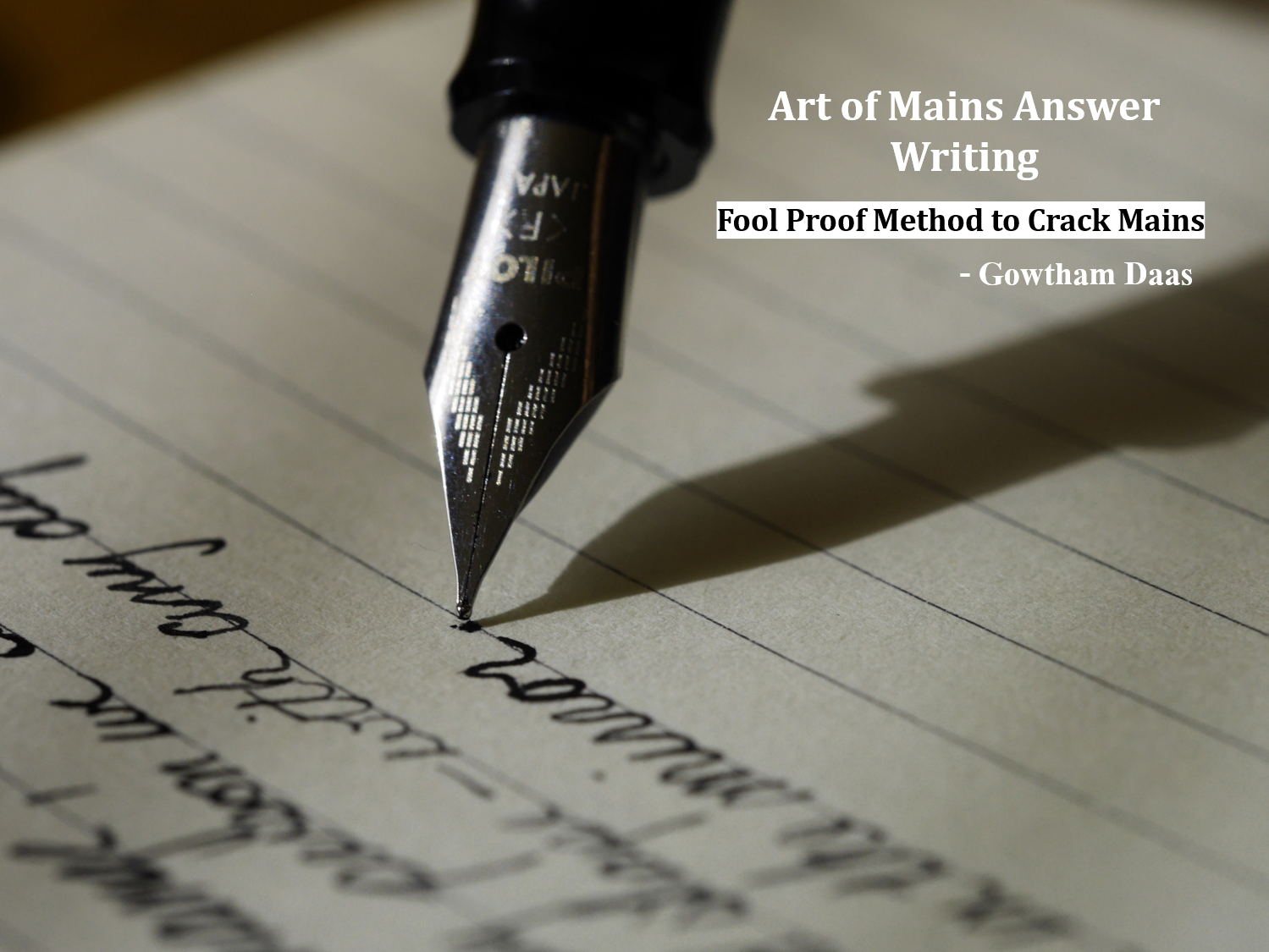Hello Everyone,
Following was my approach,
“I would say dealing with mains is all about getting one’s mind back to Good old School days. Reading and writing – practicing the relevant questions to be asked for board exams. Same is with UPSC”.
For any article Say for ex: the latest issue
There are two ways,
- to read from monthly compilation [preferably Insights on India] GS 1 , GS 2, GS3, GS4 which I have elaborated below,
- to read based on date. Say Jan 1, 2020, Jan 2, 2020. – Here you need to segregate the topics paper wise. GS1, GS2, GS3, GS4. So, better go to point no.1.
For the above two points, mentioned below rules are the same.
Now since it is Pre times, let me write for 2020 mains.
- You have to cover in three slots.,
- January to September 2020.
- June to December 2019.
- to the max if time permits and if 1 & 2 is done justifiably for the exam, then go for Jan to May 2019.
- General thumb rule –
- Take January 2020 compilation for GS 1 – segregate the syllabus for ex. GS 1 –
- History –
- Ancient/art & culture
- Modern
- world history
- Sociology topics – Indian society, role of women, Globalization etc.,
- Geography – subtopics.,
- You can see such segregation in their compilation content page.
- So read the article. [usually from Livemint, The Hindu, Express, down to earth, Tribune etc.,] – [Don’t read from top to bottom. Just read the intro and conclusion part and skim nicely through the main content so that you will get a fair idea about the article.
- saying this because, the content will be covered in synopsis with more than 300 word limit. So save the time for writing and in self evaluating after writing the answers. ]
- Feel the Question, based on the article[link below each question],
- now, read the synopsis
- read the respective answers by other aspirants in the column – if you click the question, you will be directed to the page where you can read under discuss comment section. Just read 1–2 answers which is pertinent to the question. no need to read every answers in the comment section.
- So read the article. [usually from Livemint, The Hindu, Express, down to earth, Tribune etc.,] – [Don’t read from top to bottom. Just read the intro and conclusion part and skim nicely through the main content so that you will get a fair idea about the article.
- so time taken for one question approx. just to read – 10–15 min max. [time to read these old months pending tasks]
- likewise for 8 question approx., posted daily it will take approx. 1 hour to complete the reading. [this is a daily task to be done wrt secure initiative as soon as one start their preparation]
- Now for writing, based on previous year pattern, one can split the entire paper according to the no of words per answer. Few questions demand 150 words, few 200 words, it depends. So considering the previous year pattern[2017] there are 20 questions. Out of 20 questions, first 10 requires 150 words, rest 250 words. So, we need to split the entire paper for 3 hours.
- 1 hr. – 7 questions – 7-8 min /question [150 words]
- 1 hr. – 7 questions – 8–10 min/question.[ this can be split into two by varying the time allocation.
- 3 questions 7-8 min[150 words], 4 questions – 9 -10 min[250 words]
- 1 hr. – 6 questions – 9–10 min – 250 words[last 6 questions].
Now the real time challenge.,[Implementing]
- For ex., read one question or say 2–3 at a stretch, feel it, try retaining in your memory the important points[practice Photographic memory technique – remember key points for the answer, use image to remember the points, mnemonics etc.,] – say for 150–200 word limits, as per the Question requirement, take a notebook preferably same format as UPSC mains booklet shown below.
- [see the sample booklet which i got it from Delhi ORN book market for practicing] –
- as soon as you read the sample synopsis and other answers, write it immediately in your style either through flowchart or bullet points based on the questions requirements.[regular writing is the only key to get a good score in mains]
- to follow, always give a one liner – introduction for the question and follow these,
- subject,
- deal with different requirements of the question especially the core requirement of the question based on keyword – Elucidate, Comment, Critically comment etc.,[go for bullet points and make the evaluator happy when they read your answer. this should be the prime focus]
- conclude it in crisp, futuristic based, multidimensional way as per the requirement of the question.
- slowly no. of answers can be increased to 7–8 no’s per hour. [ this comes by sheer practice]
- so write down the answer by keeping time. you are your own boss. so dont worry about memory retention at first step. believe in yourself and Just write as much quality content as possible.
- now when it is done, review by comparing it with synopsis they give, share it with fellow quality aspirants, successful aspirants and get feedback. if not.,
- practice on your own, join test series so that this secure practice will help you enhancing the model test series evaluated by the institute.
So the key is Reading, Writing[immediately after reading – for memory retention], Revision. RWR tool. Practice this tool till mains.
So from above all, consistency in doing the above will fetch a very good score in mains.
if you feel some topics are missing, you can cover the same from Vision mains 365.
So what happened to Mains ? you will crack it with good cutoff.
All the Best for Interview !
